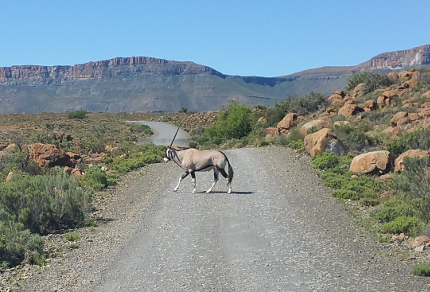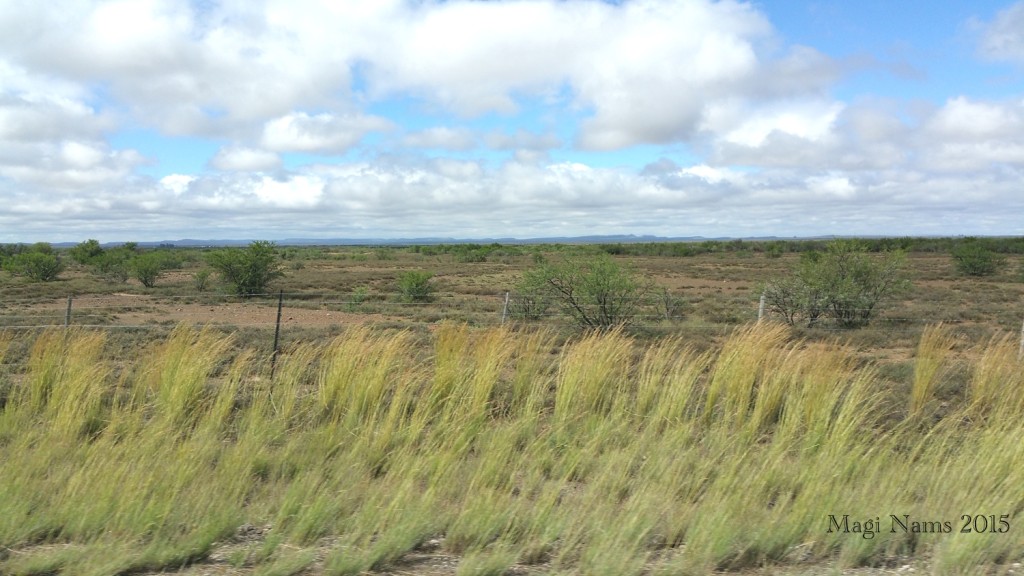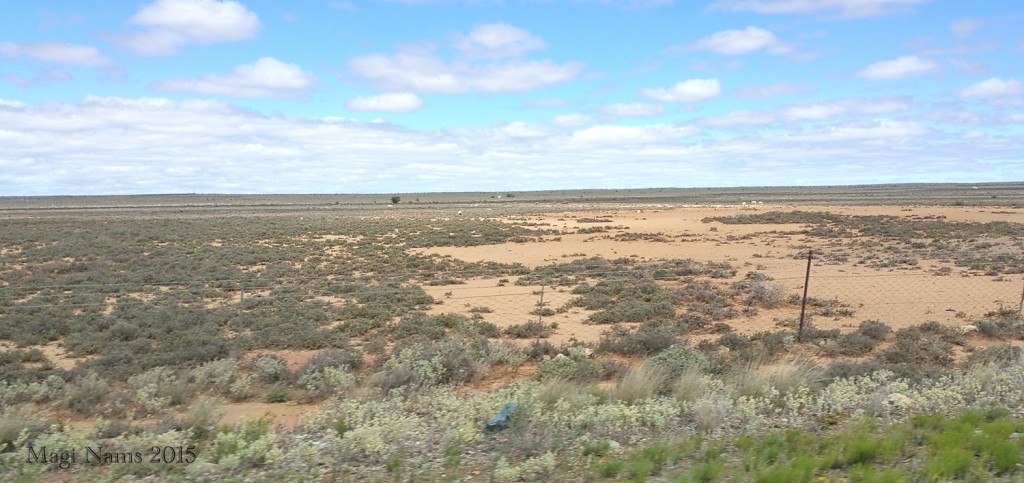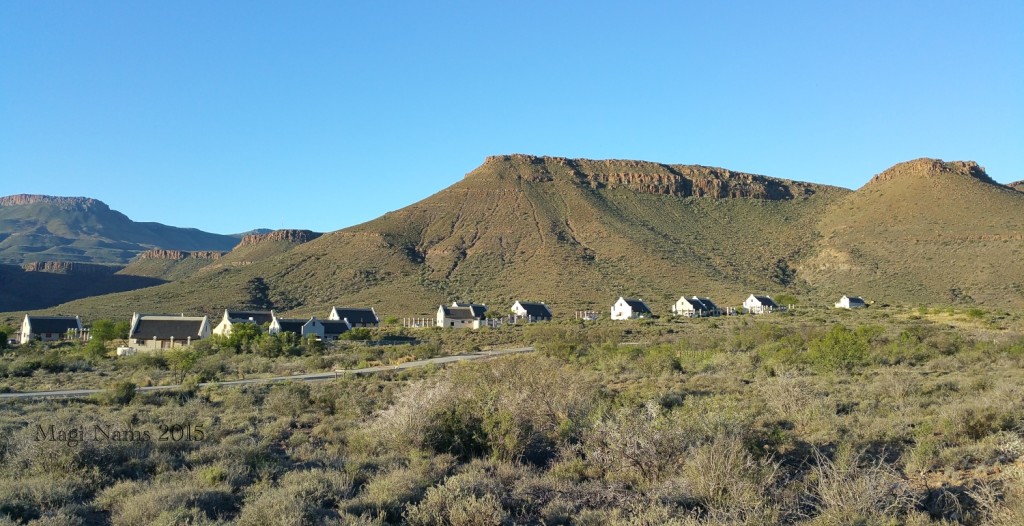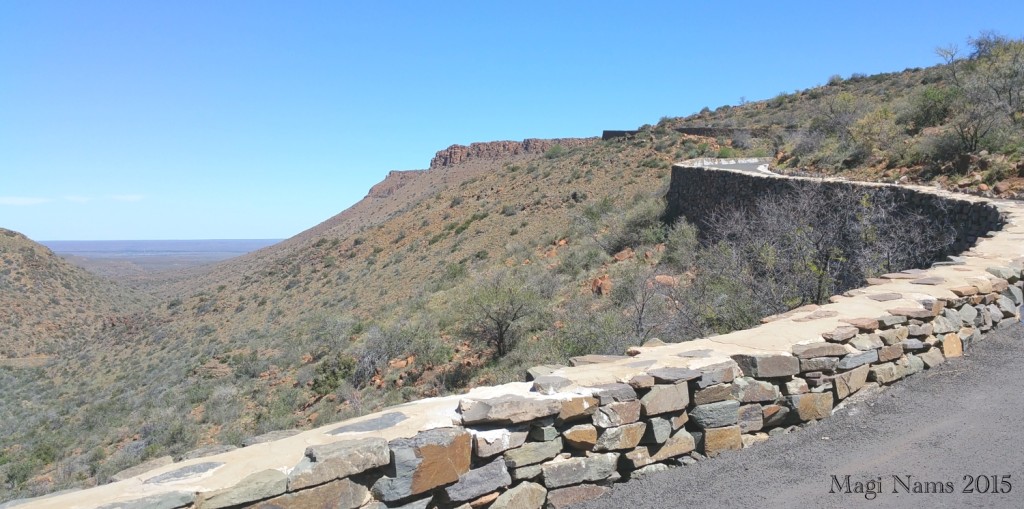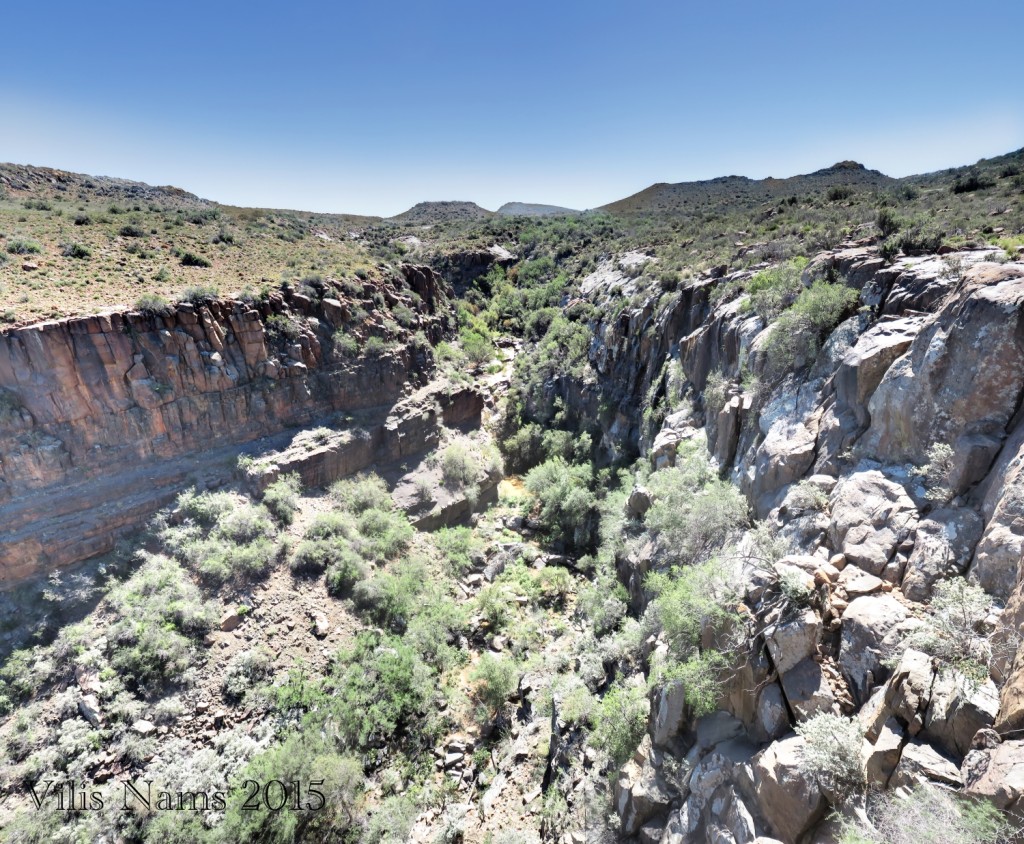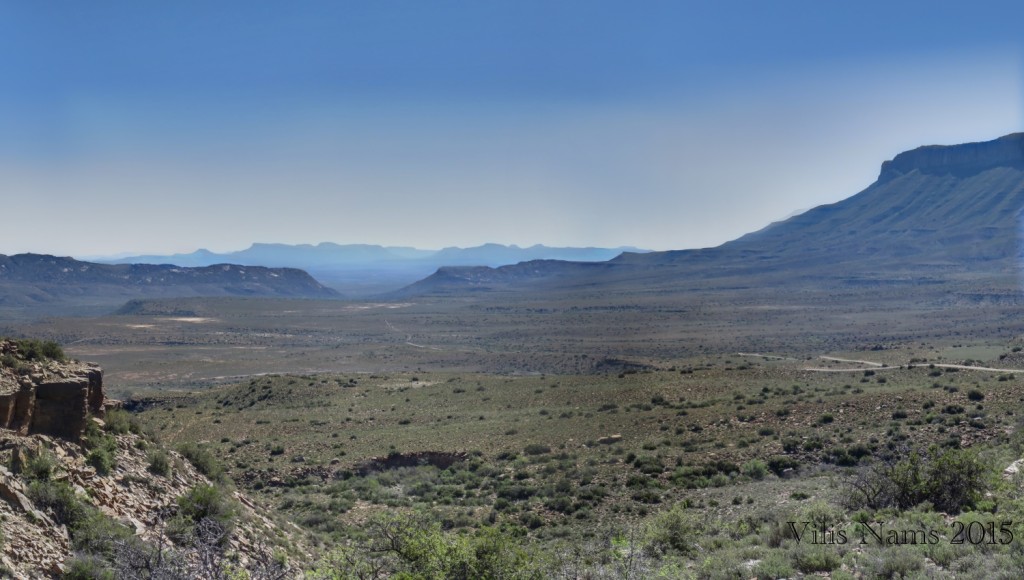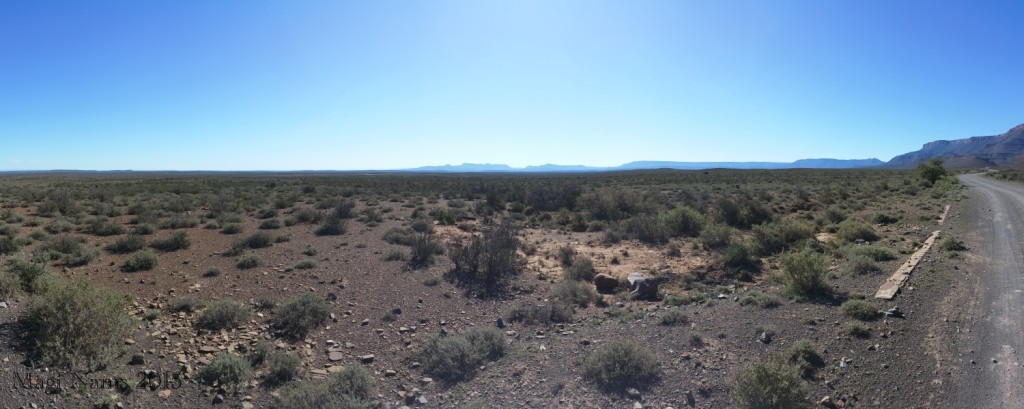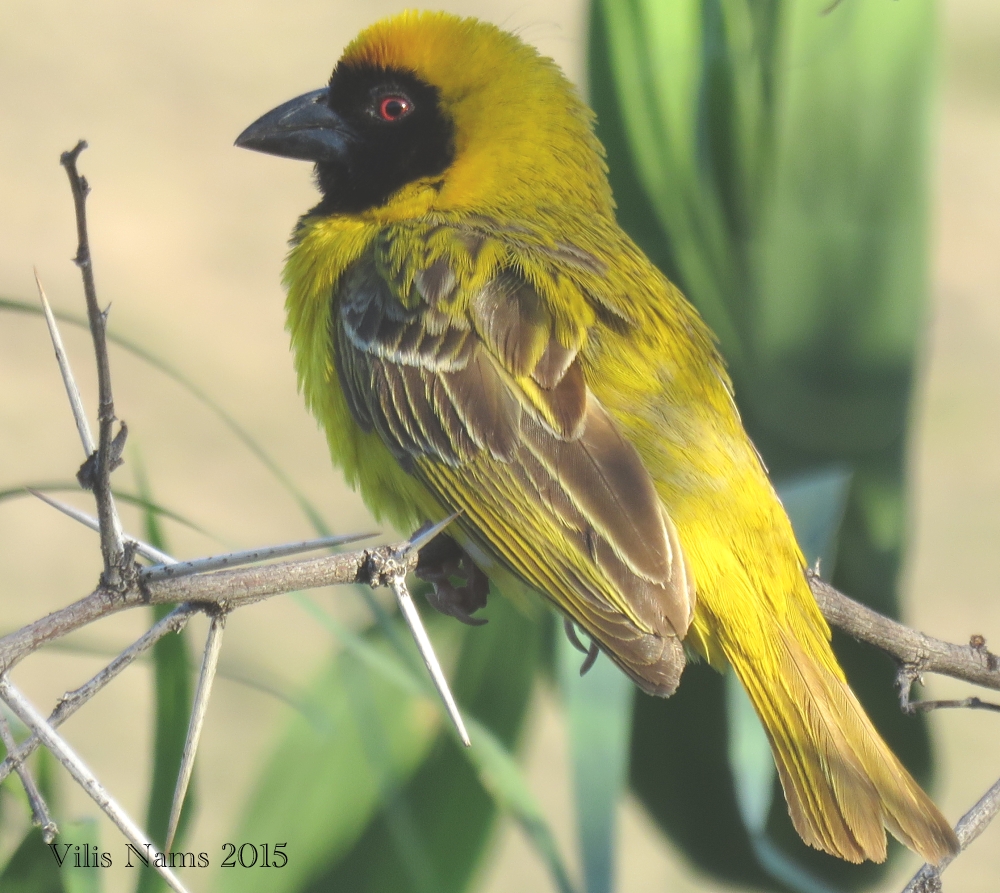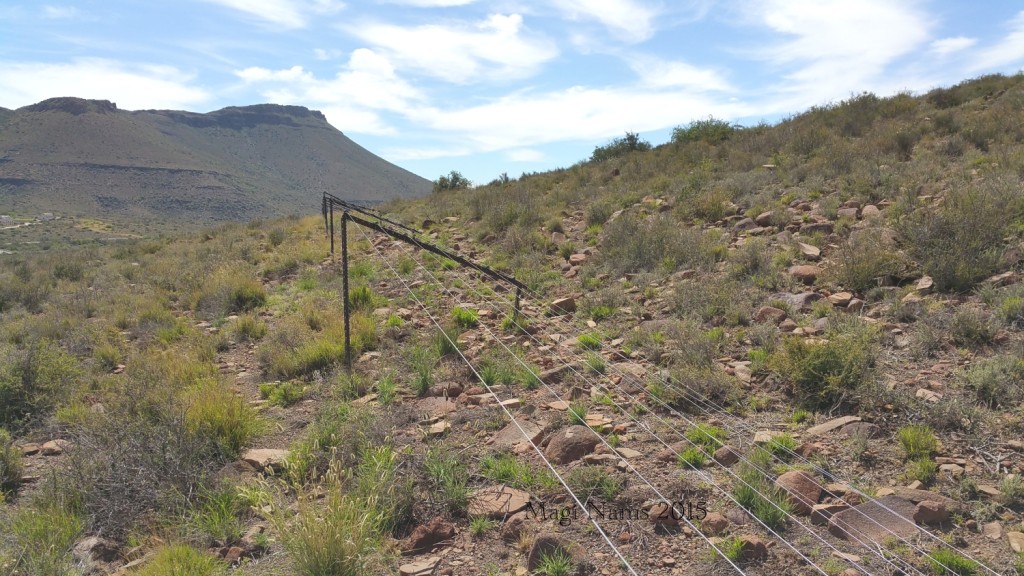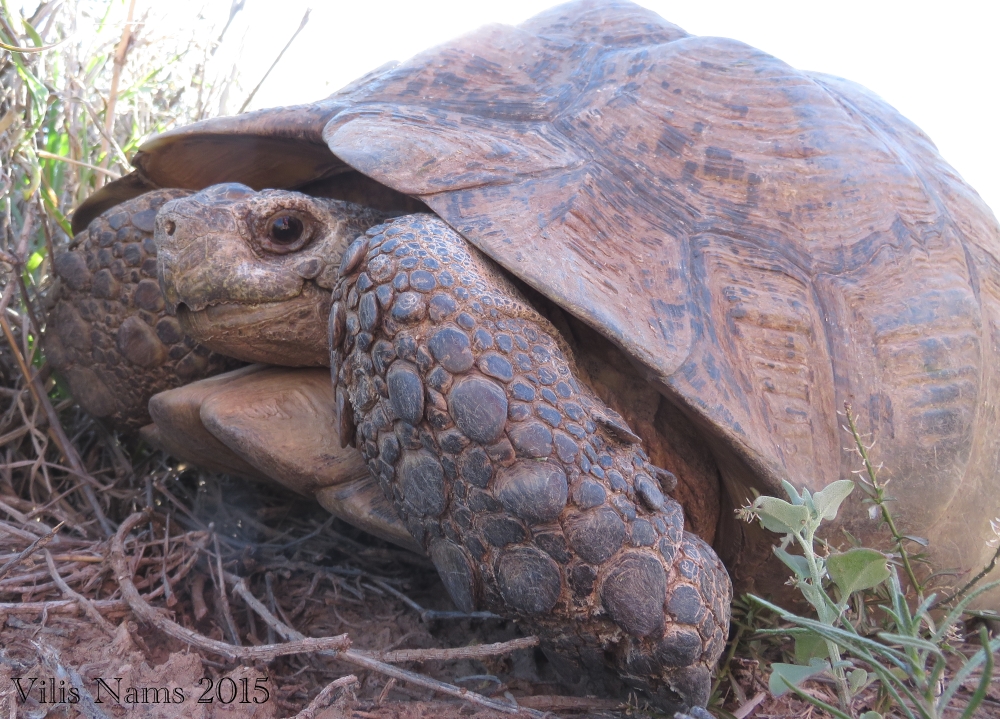Timeless and stark, the arid plateaus and plains of Karoo National Park offer stunning vistas and are home to dainty klipspringers, elegant gemsbok and endangered Cape mountain zebras.
Vilis and I left Camdeboo National Park’s tented camp at 8:30 a.m. on October 22 and drove west over the immense plain we’d seen from the Valley of Desolation escarpment the previous evening. Vegetation consisted of scattered thorn shrubs, dwarf shrubs, and grasses and herbs growing on gravelly, orange-brown soil. We saw one sheep…one cow…five sheep…and so on, in vast tracts of fenced rangeland that looked overgrazed and obviously could only support a very low stocking density. Farther west, the land was even more arid, with shorter, sparser vegetation, more exposed soil and a few sheep and woolly goats here and there.
White, cotton-candy clouds dissipated as we drove west toward mountain ranges that bit chunks out of the sky and bore scalloped ramparts below rocky plateaus. The whole landscape exuded timelessness. And starkness. The only real trees we saw were in farmyards or at roadside picnic sites. The Great Karoo is an immense expanse of arid land that fills much of central South Africa, and we were heading deeper into it.
Three hours after setting out, we drove through Beaufort West and then entered nearby Karoo National Park (KNP), 90,000 hectares of land protecting the indigenous flora and fauna of the Nama Karoo Biome.1 We drove the Lammertjiesleegte loop road to Bulkraal picnic site and, en route, spotted gemsbok, ostriches, springbok, kudu, tortoises, a herd of twenty eland, red hartebeest and a gorgeous European bee-eater, the bird’s cinnamon-green-blue plumage shockingly bright in the dry landscape. The picnic site was an oasis of trees and shrubs and even boasted a postage-stamp-sized lawn and swimming pool. We ate a late lunch at a picnic table beneath shade trees while a Namaqua warbler scolded us and then watched vervet monkeys drink from the pool as we drove away.
In searing afternoon sun, we checked in at the park’s rest camp and then drove a twisting, tarred road, edged with a rock wall, through Klipspringer Pass. We soon spotted two klipspringers – small antelope that are the pass’s namesake. They walked on the tips of their hoofs and bounded up a rocky slope with ease. Vilis describes klipspringers as being the ballet dancers of African antelope.
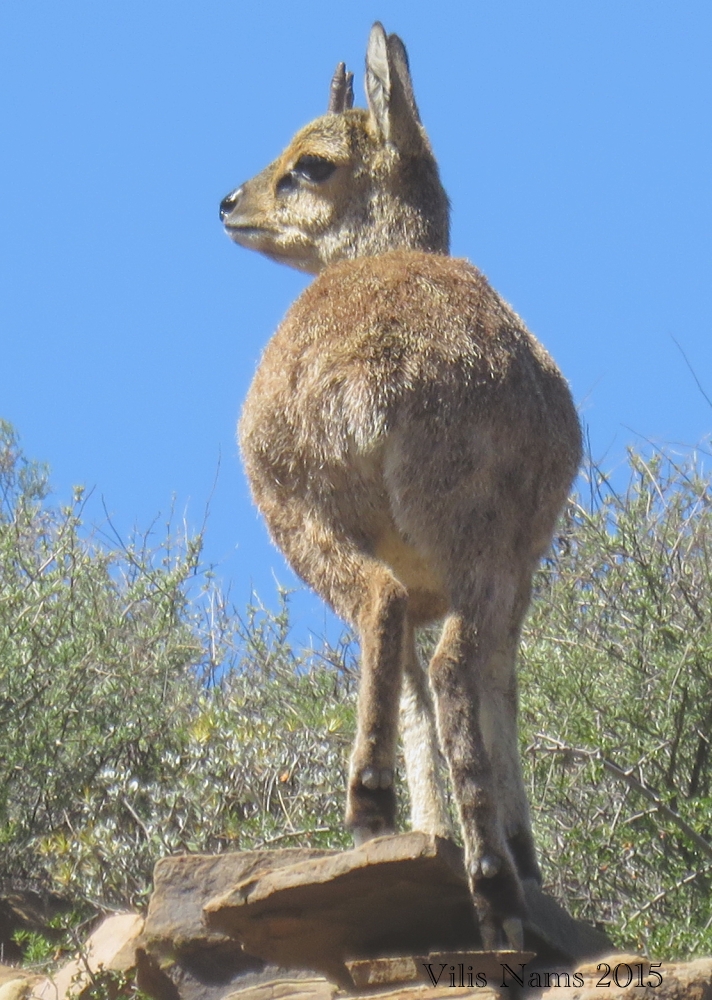
Klipspringer (Oreotragus oreotragus) (© Vilis Nams) Note how this klipspringer ram walks on the tips of its hoofs.
We paused at Rooivalle Lookout Point, where I enjoyed seeing speckled pigeons, red-winged starlings, rock martins and greater striped swallows in their natural habitat within the gorge, rather than among human habitations, as I’ve so often seen them in Grahamstown.
Beyond the pass, the tarred road became gravel road, and we spent the rest of the afternoon slowly driving Potlekkertjie Loop through uplands and plains in the eastern section of the park. (The middle section of the park has only 4×4 tracks, and the westernmost section has no roads at all.) A red hartebeest and a small herd of Cape mountain zebra grazed on boulder-strewn hillsides. A gemsbok bull crossed the road in front of us and then thrashed at a shrub with its head and horns and defecated and urinated, marking its territory.
Majestic vistas surrounded us, dwarfing two leopard tortoises as they hustled across the road, a male Karoo long-billed lark as it sang from its perch atop a scrawny shrub, and two springbok panting beneath the unrelenting sun.
I was glad when we turned away from the sun and drove the remainder of the loop back to the main rest camp. Before darkness fell, Vilis and I visited a blind nestled beside a small dam at camp. A greater striped swallow, its beak stuffed full of fluffy, white seeds, perched on a ledge beside us. Brightly coloured southern masked weavers and southern red bishops clung to reeds or thorn tree branches and rasped out territorial calls.
The evening brought cooler air, and we dined outdoors at the park restaurant, absorbing more of the desertlike ambience of the surrounding landscape. We listened for the roar of lions, but heard none. Then we crashed into bed, exhausted.
The next day, Vilis and I ended up having a private early morning walk with one of the park rangers, Gregory, since no one else had signed up. Our guide told us that he’d heard lions roaring in the night, so he’d checked their location first thing in the morning. Their GPS-collars had revealed that they were close to camp. Armed with a rifle, he cautiously led us out of the electrified predator-proof fence surrounding the main camp and up onto a plateau.
During the walk, Gregory showed us native plants, told us about the ecology of the Karoo and quizzed us about animal sign before explaining to us which critter had deposited the scat or urine or had flipped over a rock or dug a small tunnel. He cautioned us to be aware of our surroundings at all times and pointed out a fawn-coloured SANParks truck on the park access road below us that was constantly monitoring our movements, no doubt because of the lions’ close proximity to camp.
As we descended safely back to camp, my brain was filled with the names of hardy Karoo plants: Karoo gold, cat thorn, wait-a-bit, Karoo numnum, scorpion plant, black storm, ankerkaroo, bushman’s candle. And then there were the snippets of environmental trivia: winter as cold as -5° C, summer as hot as 49° C, rain in summer, temporary snowfalls in winter, antlion hole and the “Small Five” – elephant shrew, antlion, leopard tortoise, buffalo weaver, rhinoceros beetle.
Before leaving the park, Vilis and I ate a hearty breakfast at the restaurant and scanned the dry veld beyond the restaurant’s patio, hoping to see those lions. We didn’t. Then we packed up and headed south from the park toward the next destination on our itinerary: Swartberg Pass.
My Karoo NP bird list: house sparrow, ostrich, *European bee-eater, fiscal flycatcher, *acacia pied barbet, southern masked weaver, Cape white-eye, Cape wagtail, *dusky sunbird, *Namaqua warbler, Karoo scrub-robin, African red-eyed bulbul, white-backed mousebird, red-winged starling, speckled pigeon, rock martin, greater striped swallow, pale-winged starling, southern pale chanting goshawk, *Karoo long-billed lark, Egyptian goose, *Namaqua dove, familiar chat, southern red bishop, laughing dove, white-rumped swift, Cape sparrow, Cape bunting, white-necked raven, *lark-like bunting, sickle-winged chat, Cape robin-chat, Karoo prinia.
My Karoo NP mammal list: gemsbok, eland, red hartebeest, vervet monkey, *klipspringer, mountain zebra, steenbok, springbok, plains zebra, kudu.
My Karoo NP reptile list: leopard tortoise.
Reference:
- South African National Parks. Karoo National Park Visitor’s Map.

